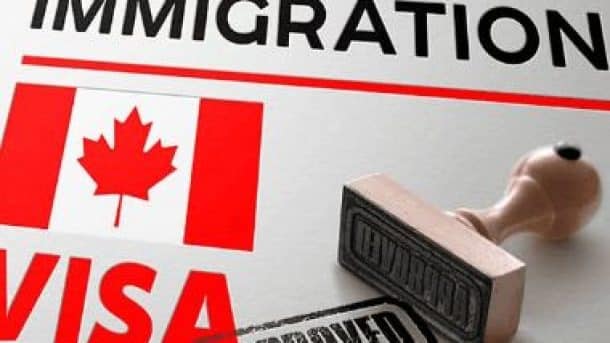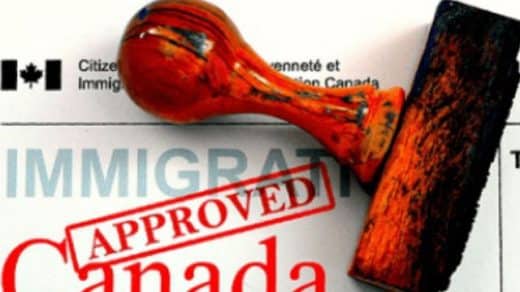A visiting visa, also known as a Temporary Resident Visa (TRV), is an immigration document that enables foreign nationals to travel to and enter Canada. Unless you are from a visa-exempt nation, you will require a visitor visa to enter Canada, whether you are a student, a temporary worker, or just visiting.
Canadian visitor visas are classified into two types: single-entry and multiple-entry.
A single entry visa allows foreign nationals to enter Canada once only. A multiple entry visa permits holders to enter and exit Canada as many times as they like as long as the visa is valid.
You do not need to select which type to apply for; applicants are automatically evaluated for multiple entry visas and are only granted single entry visas in exceptional circumstances.
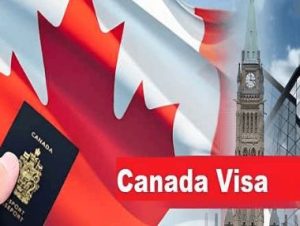
Multiple entry visitor visas allow the holder to visit Canada for six months at a time as often as they wish, as long as the visa is valid.
They can be valid for up to ten years, but the precise validity time is determined by the immigration officer issuing it. If you have another status document, such as a study or work permit, and are not otherwise visa-exempt, you will be automatically granted a visiting visa, allowing you to enter Canada to obtain your permission.
Typically, this is a multiple-entry visa. If you want to leave Canada momentarily for studies or job, you will not need to apply for a new visitor visa to return as long as your permission and visa are still current.
Who needs a visitor visa?
Everyone who wishes to enter Canada but is not a Canadian citizen, permanent resident, or visa-exempt must obtain a guest visa. Canadian permanent residents cannot apply for a visitor visa, even if their permanent resident card has expired. They must instead apply for a Permanent Resident Travel Document (PRTD). Canadian citizens, including dual citizens, are also not eligible to apply for guest visas.They must be travelling with a valid Canadian passport. If you are traveling through or visiting Canada for business purposes rather than as a temporary foreign worker, you may require a business visitor visa.
Visa-Exempt Countries
Individuals who are visa-exempt are the only people who do not need a visitor visa to enter Canada, excluding Canadian citizens and permanent residents. Canada has agreements with numerous countries that exempt their nationals from having a visa to visit Canada for up to six months. If foreign nationals from visa-exempt nations want to visit Canada by air, they must have a valid electronic travel authorization.
If they prefer to visit by land or sea, they merely need a valid passport issued by a visa-exempt nation. The lone exemption is for US citizens.The Canada-United States border is the world’s longest undefended land border, with thousands of Canadian and American residents crossing it each day. U.S. citizens can travel to Canada with a valid US passport and do not need a visiting visa or eTA as long as they do not stay for more than six months. Regardless of their citizenship, permanent residents of the United States, also known as Green Card holders, are not required to get a visa.They need an eTA to fly to or transit through a Canadian airport, and they must have a valid Green Card and passport to enter Canada.
How To Apply
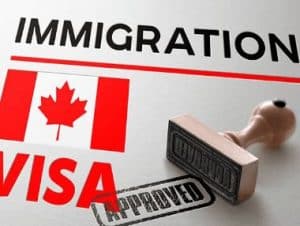

Applicants who require a visitor visa to enter Canada can apply online, on paper, or in person at a Visa Application Center (VAC). If you’re travelling as a family, each member, including dependent children, must fill out their individual application. However, you may submit all of the applications together. Depending on their nation of citizenship, applicants may be asked to submit biometric information with their application. If biometrics are necessary, the applicant must submit their fingerprints and photograph at a biometric collecting service point.Biometrics can be gathered after submitting the visiting visa application when prompted, or at the time of submission if submitting in person at a Visa Application Center (VAC).
Extending the Visitor Visa
Visitor visas, either single or multiple entry, allow foreign nationals to legally reside in Canada for up to six months at a time.Your legal status will expire at the conclusion of this period, and you will be required to leave Canada.Foreign nationals who wish to prolong their stay beyond six months must apply while their temporary resident status is still valid. You should request for an extension at least 30 days before your status expires.If your existing visa expires while your extension application is being reviewed, you may remain in Canada until a decision is made.This is known as inferred status.You can also apply for permanent resident status if you qualify for one of Canada’s immigration programs.
Why Visitor Visas Are Denied.
Visitor visas are frequently denied due to difficulties such as insufficient documentation, financial instability, a criminal record, health concerns, ambiguous travel intentions, poor ties to the home country, previous travel history problems, misrepresentation, overstaying records, or unlawful status. For a more in-depth knowledge of these causes, as well as important tips on how to improve your visa application, we recommend reading our full essay titled “Top Reasons Behind Canada Visitor Visa Refusals”. There, you can get the information you need to improve your chances of getting a visa approved.
FAQs
What is a transit visa?
A transit or airport visa is a travel permit that allows foreign nationals to cross Canadian borders. It is an official document affixed to a traveler’s passport that shows that the individual is from a visa-required nation and is eligible to transit through Canada; it is not the same as a tourist visa.
What is a visitor’s visa?
People who want to visit Canada must get a visitor visa (sometimes known as a temporary resident visa). A visiting visa is an official travel document that allows citizens of visa-required nations to enter and stay in Canada for up to six months.
When do you need to travel via Canada?
Overview
You require a Canadian transit visa if:
- If you need to go to or from the United States by plane, your international flight will make a layover in Canada.
- To reach your destination, you must take an international aircraft.
- You do not have a guest visa.
- You are a foreign national from a country that requires visas.
- You will arrive at a Canadian airport within 24 hours or 48 hours at most.
- Who isn’t eligible?
- Citizens from visa-required states who travel to Canada by vehicle, bus, train, or cruise ship.
- Persons considered inadmissible under Canadian Immigration Law.
How do you know if you qualify for electronic travel authorization?
Notably, only nationals of visa-free jurisdictions are eligible to apply for eTA. Other conditions to meet are:
- Proof of personal funds adequate to cover your stay in Canada.
- No record of criminal convictions or immigration issues caused by criminal record.
- A valid passport.
- Good health.
- No intention to study, work, or get permanent residency.
Who is authorized to travel across Canada with a passport?
- U.S. citizens and lawful permanent residents may enter Canada with valid U.S. visas.
- People with dual citizenship in Canada can travel through Canada with valid US and Canadian visas.
- TWOV foreign nationals include citizens of the Transit Without Visa Program (China, Indonesia, the Philippines, Thailand, and Taiwan) and the China Transit Program.
- Canadian airports include Calgary International Airport (Alberta), Toronto Pearson International Airport, Terminal 1 (Ontario), Vancouver International Airport (British Columbia), and Winnipeg International Airport (Manitoba).
- Airline carriers include Air Canada, Air Canada Rouge, Air China, Cathay Pacific, China Airlines, China Eastern, China Southern, Hainan
- Airlines, Jazz Air, Philippines Airlines, WestJet, and Xiamen Airlines.Traveling through Canada with a passport may necessitate an additional travel document.
How can I apply for an airport visa application?
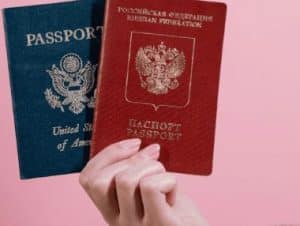
Overview
- Before you begin your application, make sure you read the rules for gathering and submitting travel documents. The Canada Immigration website includes guidelines.
- Make sure you know which entry mode applies to you: passport, electronic travel authorization (eTV), or transit visa.
- Get fully vaccinated or show proof of vaccination.
- Check to see if you need to supply biometric data. Not all travelers, particularly those traveling from or to the United States or holding a US passport, are required to provide biometric information. Biometrics are necessary every ten years. You can submit your biometric information online, via email, or in person at the visa application center.
- Select your method of application. You can apply both online and on paper.
- If you’re applying online, make sure you have all of your essential documents in soft copy. You use a scanner to make soft copies of your papers.
- If you are applying in person on paper, go to your local visa office to get the guidelines for the application packet. Application packages differ by country.
- Prepare all essential paperwork for application.
- Fill up and complete the online application form available on the Canada Immigration website. Applicants entering Canada to board an international aircraft to another country must complete an Application for Temporary Resident Visa, Family Information, Document Checklist, and other needed documents.
- Please submit your application and ensure that it was properly submitted. If you are submitting your application on paper, go to your country’s visa application centre.

